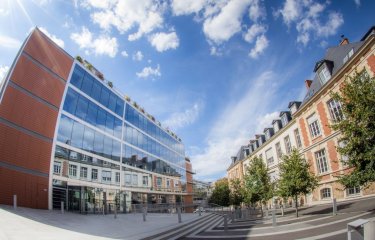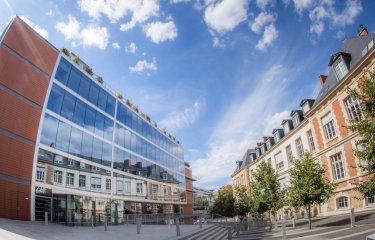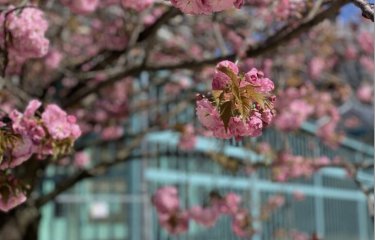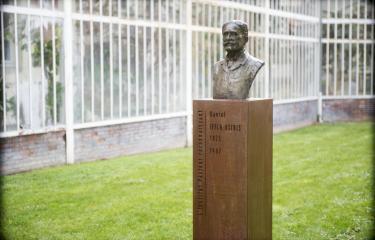The Institut Pasteur, set up following the success of the human rabies vaccination with funds from a public appeal launched by the French Academy of Sciences, was officially opened 130 years ago, on November 14, 1888, at a ceremony attended by the French President Sadi Carnot and several other prestigious guests. We look back on a day that "would go down in the history of medicine".*
A huge crowd gathered around what some were calling "The Rabies Palace", a vast Louis XIII-style brick and stone building with a pediment bearing the carved inscription: Souscription publique 1888 (1888 public appeal). The entrance gate was draped with French flags. In front of the building stood a bronze statue of the shepherd boy Jean-Baptiste Jupille, one of the first people to be vaccinated for rabies, struggling against a rabid dog. The many guests waiting outside were accompanied by members of the Republican Guard. The ceremony was held in the Institut Pasteur library, which had been turned into a reception room for the occasion, complete with a podium surrounded by marble busts of major donors.** Half an hour before the scheduled start time of 1 o’clock, the room was full to overflowing: 600 guests – politicians, ministers, fellow scientists, friends and colleagues – had flocked to the ceremony. Some of Louis Pasteur's "disciples" were even hard-pressed to find a seat and were forced to join others in the adjoining gallery.
As the presidential car drew up, the Republican Guard performed La Marseillaise and 65-year-old Louis Pasteur, wearing the prestigious Grand Cordon of the Legion of Honor, walked down the steps to greet French President Sadi Carnot. Then came the speeches, first from Dr. Grancher, who looked back on the career of his mentor Louis Pasteur and reported on the latest results of the rabies vaccination. When it was the turn of the institute's founder, Louis Pasteur, to speak, he was overcome by emotion and asked his son to read the words he had prepared: "And here we see it finished, this grand building of which it may be truly said that there is not a single stone that is not the material sign of a generous thought. All the virtues have paid tribute towards the erection of this abode of toil." He went on: "Before the first stone was laid, the patronage committee for the appeal decided, against my better wishes, that this institute would bear my name." After the speeches, President Sadi Carnot stood up and shook Pasteur's hand. "Your institute is an honor for France," he said. "Modest as ever, you asked only for recognition for your colleagues. (…) I am pleased to announce that Messrs. Grancher and Duclaux have been awarded the title of Officer of the Legion of Honor." Mr. Chantemesse was given the rank of Knight. The distinction of Palmes d'officier d'académie was bestowed on the architect Mr. Brébant, who, like his late predecessor Mr. Petit, had generously donated his fee to the institute. At the end of the ceremony, Louis Pasteur was given a lengthy ovation; clearly moved, he was seen wiping his eyes several times.

"There were so many people..."
In a letter to his mother dated November 17, 1888, one of Louis Pasteur's "disciples", Dr. Alexandre Yersin, wrote: "The inauguration of the institute took place on Wednesday. I saw the President of the Republic and several ministers. There were so many people that I couldn't find a seat in the room, and neither could Dr. Roux; so, like you, I had to make do with the reports in the newspapers."
Five laboratories and a rabies department from the outset
In 1888, the Institut Pasteur had a rabies vaccination department and five research laboratories, directed by Louis Pasteur's ever-loyal colleagues: Dr. Grancher (rabies), Emile Duclaux (general microbiology), Emile Roux (technical microbiology), Ilya Mechnikov (morphological microbiology) and Charles Chamberland (vaccines).
* According to the Permanent Secretary of the Academy of Sciences, Mr. Bertrand.
** Mrs. Boucicaut, Mrs. Furtado-Heine, Emperor Pedro II of Brazil, Tsar Alexander III of Russia, Baron Alphonse de Rothschild and Count de Laubespin.







